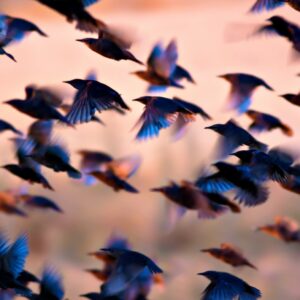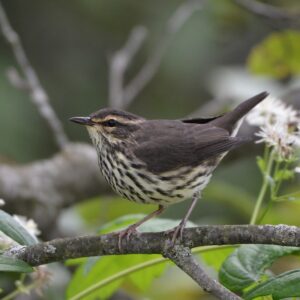Justice on the horizon for migratory birds
Thanks to Ontario Nature and Ecojustice, justice may be around the corner for migratory bird losses! Menkes, a Toronto property developer and manager, has been accused for the death of many migratory birds in 2008 and 2009. ”Toronto is a migratory path for millions of birds,” says bird safety advocate Michael Mesure.
Yet, the Menkes Consilium Place Office alone, and its highly reflective window surfaces, has caused the death or injury of 7,000 birds (of 82 species) according to the Fatal Light Awareness Program (FLAP), a non-profit group working to safeguard migratory birds from the urban environment. Between 2000 and 2006 some of the victims were the White-throated Sparrow, the Golden-crowned Kinglet, Nashville Warbler, Ruby-throated Hummingbird, Ruby-crowned Kinglet and the Dark-eye Junco.
Birds that collide into these buildings suffer skull and spinal fractures, as well as severe lung hemorrhage, leading to their ultimate death, says Ecojustice lawyer Albert Koehl. High rise buildings may fascinate some of us, but they also have a great tendency to confuse migratory birds. Their mirror-like windows mimic natural routes, causing birds to fly right into them – some with the hope of landing on the tree branch they thought was right there!  According to FLAP, windows are the number one human-related factor killing birds in North America – a soaring 100-900 million+ deaths a year, predicts Dr. Daniel Klem of Muhlenberg College.
According to FLAP, windows are the number one human-related factor killing birds in North America – a soaring 100-900 million+ deaths a year, predicts Dr. Daniel Klem of Muhlenberg College.
“There are numerous ways to make these buildings safer for birds. We hope that a successful prosecution will send an appropriate message to other building owners, including downtown building owners, that action must be taken to avoid this unnecessary tragedy,” said Koehl. It is strongly recommended that building owners make use of the commercially available window treatments to safeguard migratory birds, some of which are already in decline due to other factors. Such treatments lack the reflective feature of windows currently being used; they are transparent from the inside and provide visual cues to birds from the outside. The City of Toronto has also developed guidelines to assist building owners in mitigating the potential impacts of their buildings, such as applying transparent window coverings and turning lights off at night.
A group of Menkes companies have been charged under section 14 of Ontario’s Environmental Protection Act (EPA) and the Ontario Society for the Prevention of Cruelty to Animals Act. Under section 14 of Ontario’s EPA alone, the property developer could be charged up to $6 M per day if found guilty. This, of course, will put a hole in their pockets and cost them more than changing windows!



